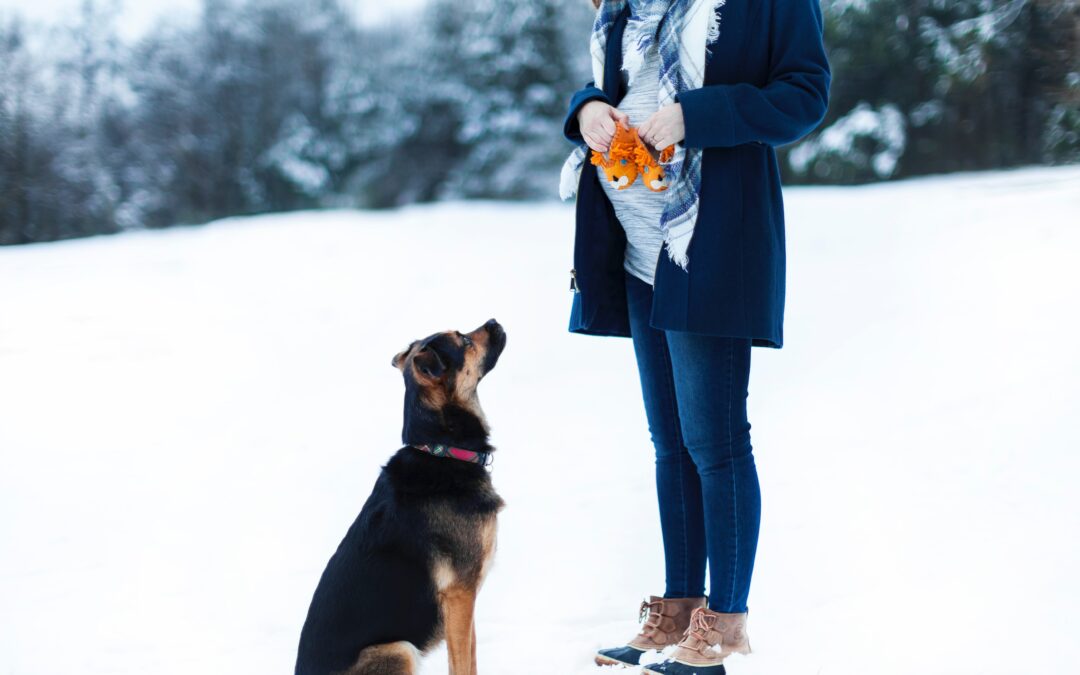Training a dog requires time, dedication, and patience. Certain outside factors can affect your training sessions, especially during the wintertime. Here are some of the biggest winter dog training challenges we’ve noticed as well as simple solutions to help you work with your dog in the most positive way possible:
Winter Dog Training Problem: Training Locations
If you had been doing a majority of your training in your backyard or another outdoor area, you might feel stuck when it comes to finding the right spot to work with your pup in the winter. The cold weather makes it more uncomfortable to work. Spending too much time outside can even be tough on your dog’s paws, which makes it harder to focus on training. Luckily, you don’t have to suffer daily through the elements just to be able to train your pet.
The Solution:
Moving your training sessions inside is not only more comfortable for you and your dog, but it also gives you some new challenges to tackle together. Some good potential indoor training locations include:
- Your house: if you are just starting out training, the house is the perfect environment. Since you can control the space, you can limit distractions for your dog to help him focus on you. Try to set up in a quiet room that will let your dog put all his attention to the task.
- Your local pet store: Most pet stores welcome animals. Strap on your dog’s leash and head over to work on some more advanced training techniques while surrounded by plenty of distractions. Working with a distracted dog helps you see if she has really learned the skills you’ve been practicing.
- Attend professional training classes: If the winter weather makes it too hard to train your dog on your own, you can sign up for professional classes. This gives your dog the structure and positive reinforcement he needs without forcing you repeatedly out into the cold.
Note: Dogs like consistency. Moving your training location may throw your dog off briefly, but they’ll quickly get the hang of your training again.
Winter Dog Training Problem: Lack of Activity Is Making Your Dog Blue
Just like humans, dogs can get the winter blues. If your normally active pup is confined indoors without a lot of activity, he might start feeling a little down. When your dog isn’t feeling like himself, it can be hard to have successful training sessions.
The Solution:
You don’t have to go for lots of long walks to keep your dog active and engaged throughout the winter. Invest in a few engagement activities that your dog can do inside the house to stay physically and mentally active. These can help him feel himself and enjoy training.
Winter Dog Training Problem: Your Dog’s Attention Span Is Shorter Than Normal
Shorter days and colder weather can make it hard for your dog to pay attention as long as she normally does. This can negatively impact training sessions and make it harder for your dog to remember information.
The Solution:
Cut your training sessions down. When they’re more succinct, your dog has a better chance of getting something from the training. Work with your dog for no more than 15 minutes a day to make sure you have her full attention for the duration of the session. If you’re starting new commands, try to only introduce 1-2 concepts. If you are working on things you’ve already covered, don’t do more than 5 in a day.
If you’re struggling with winter dog training challenges, Union Lake Pet Services offers training classes all year. They can help you prepare your pet for interacting with humans and other animals. We use positive reinforcement training to teach your dog in a loving, supportive environment. To learn more or to sign up for classes, please call (248) 363-6262.

